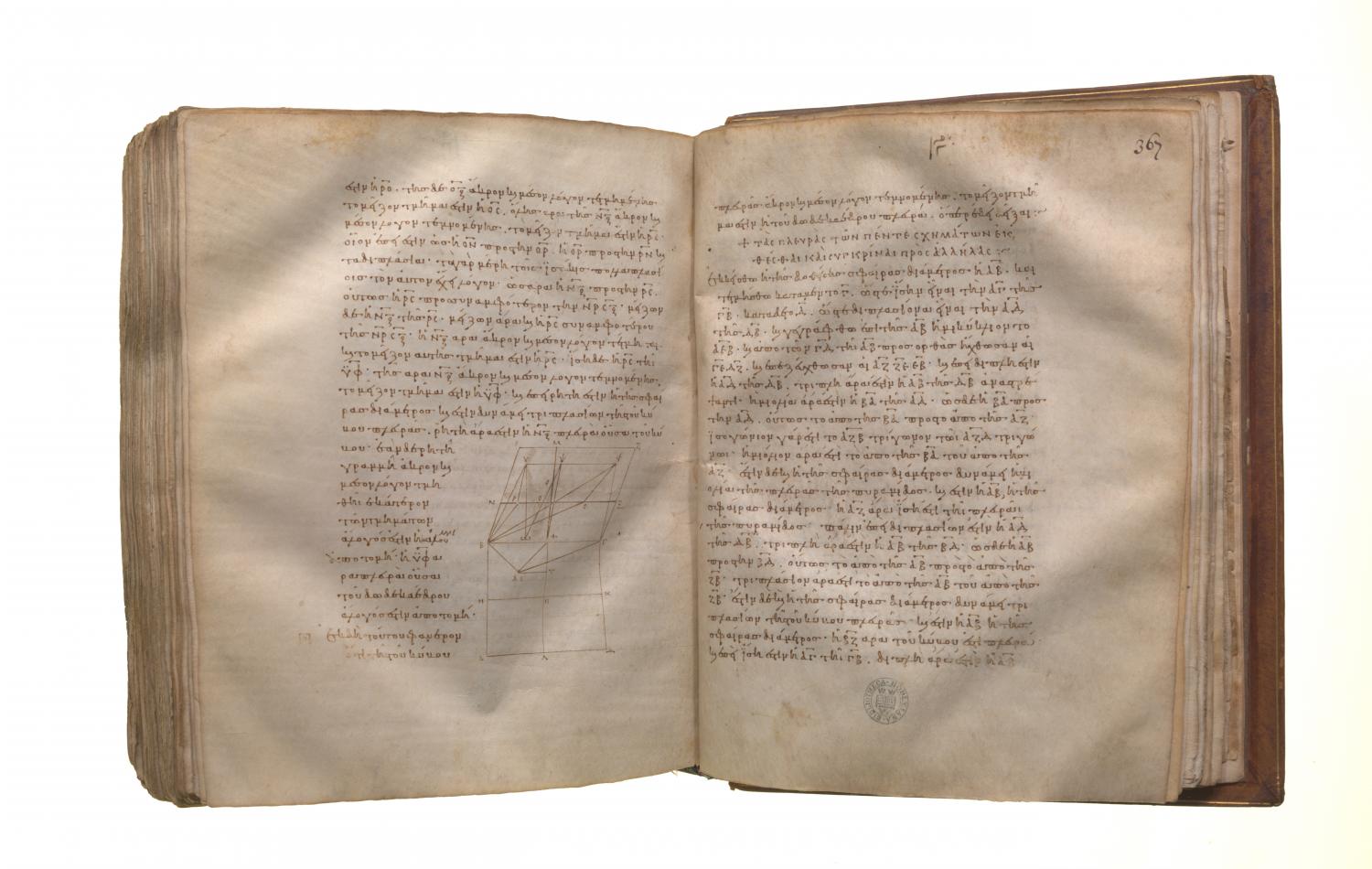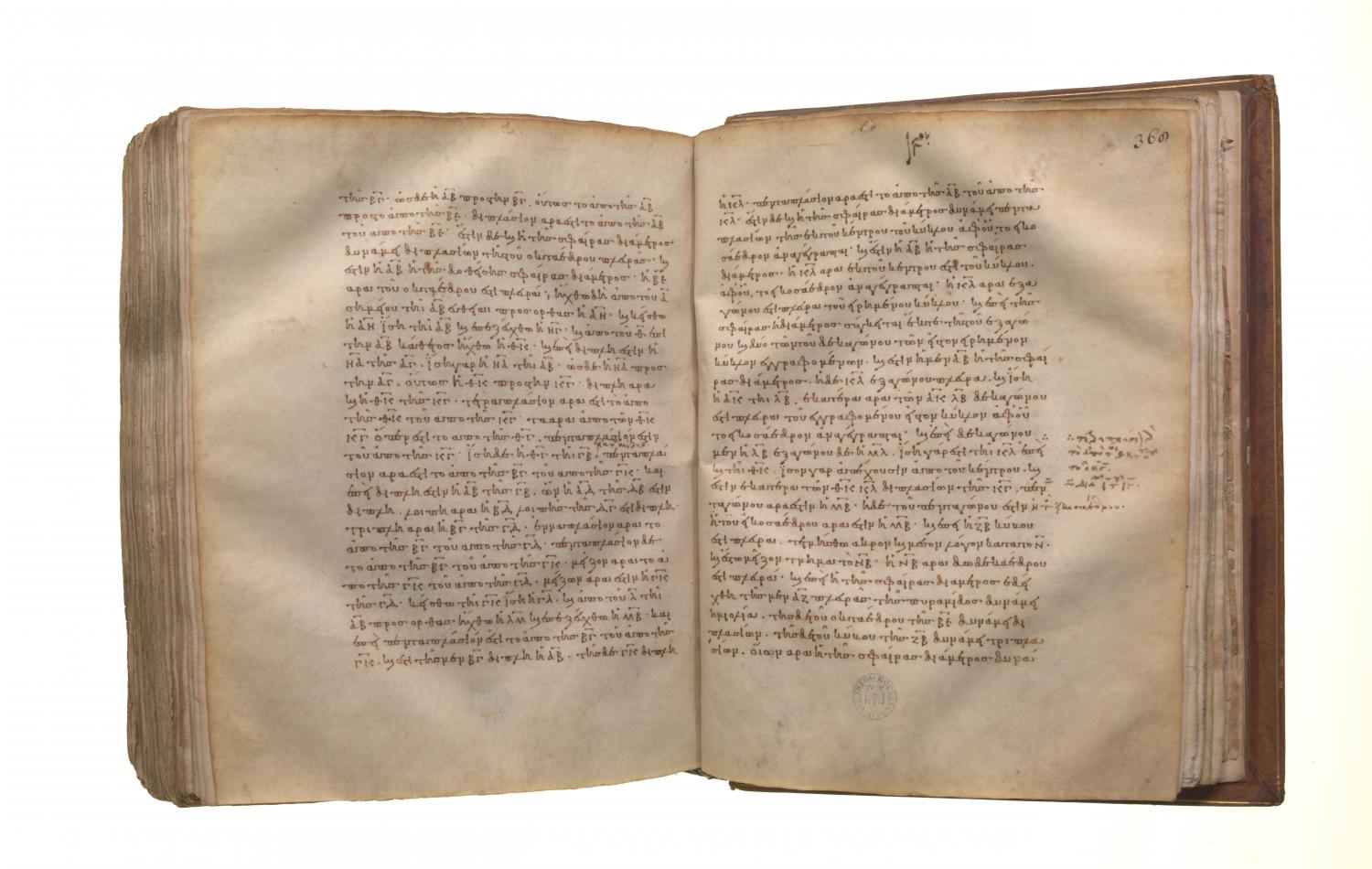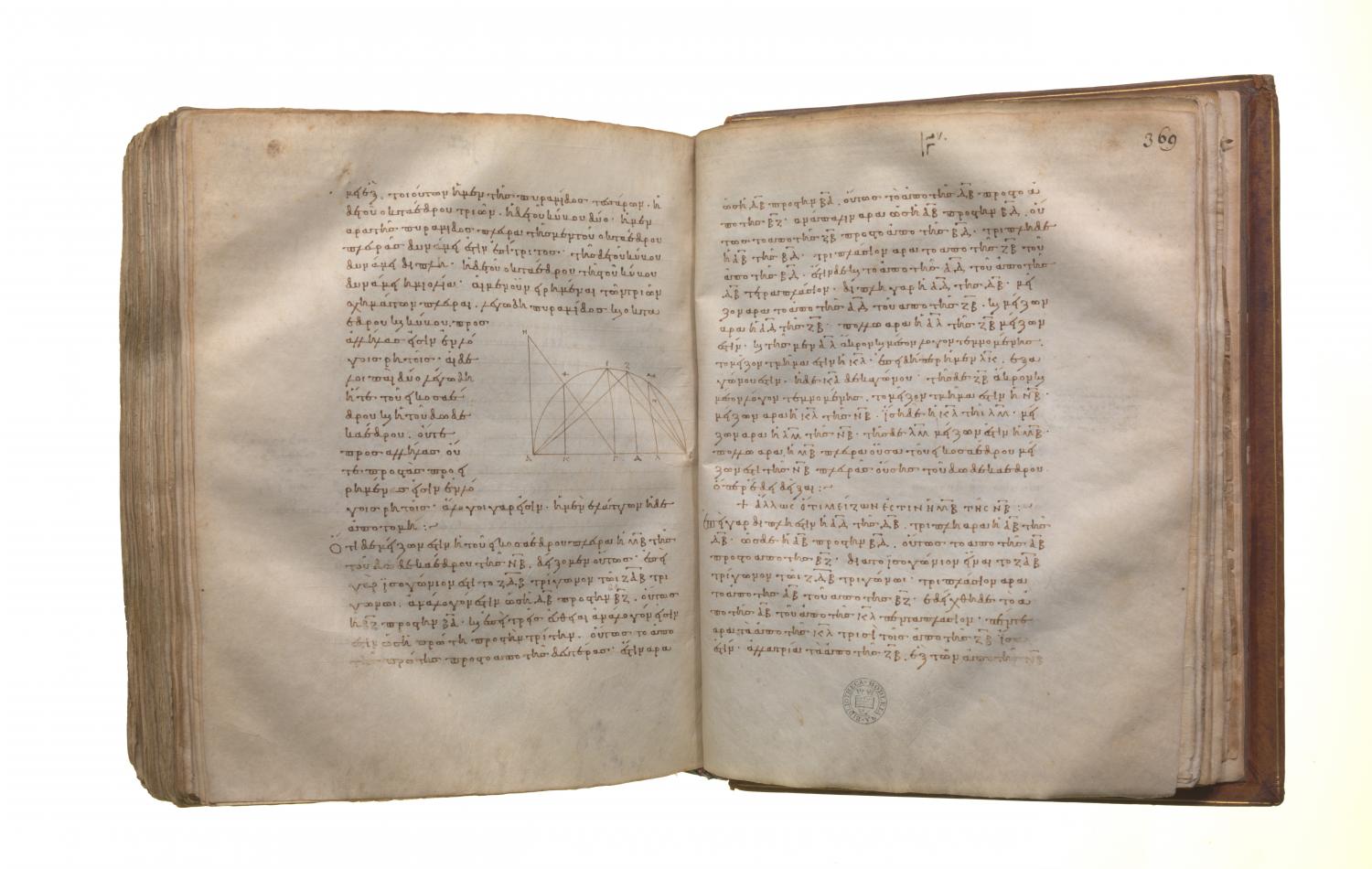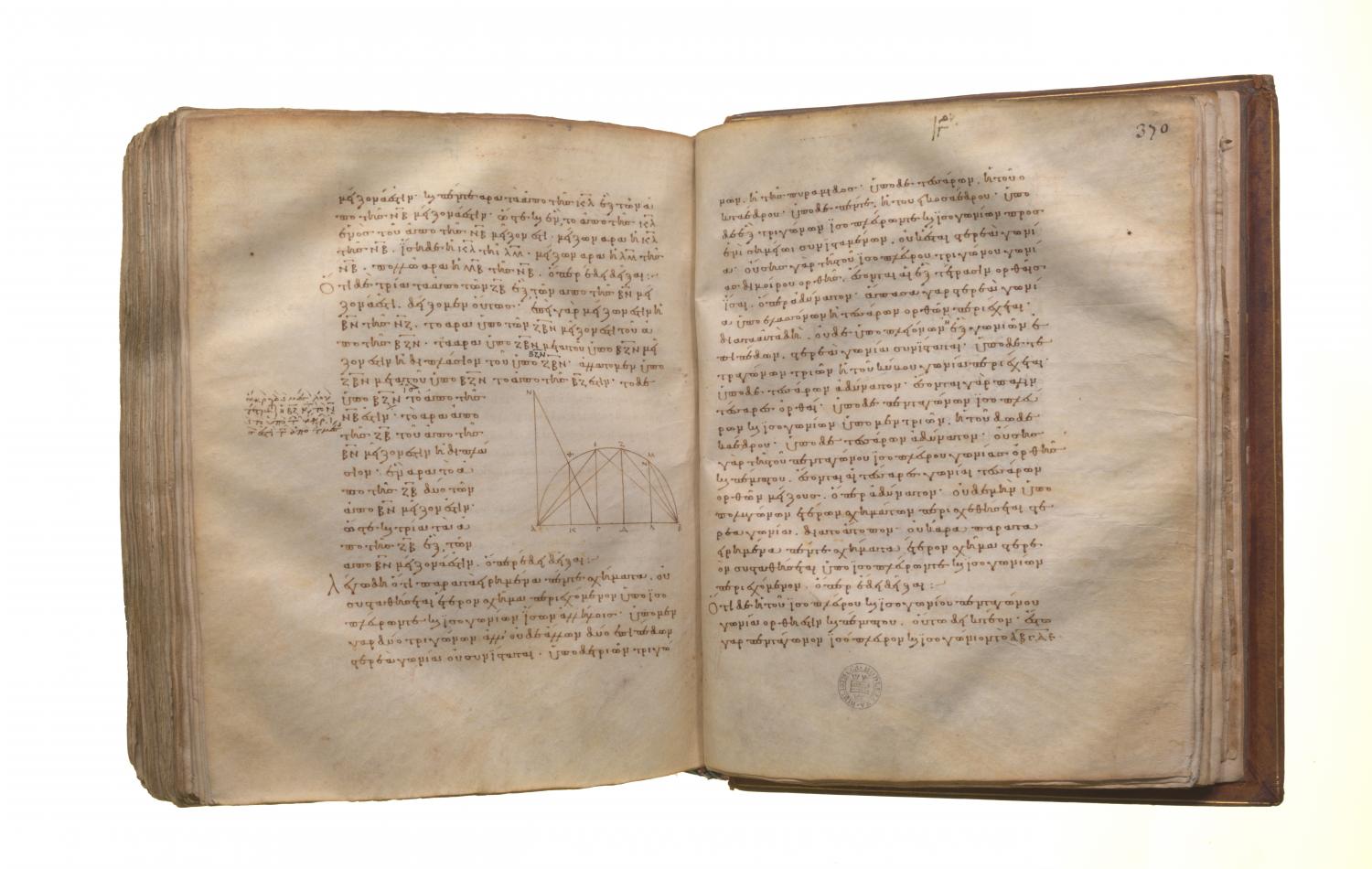Regular solids: Book 13 Proposition 18
Translations
To set out the sides of the five figures and to compare them with one another. Let AB, the diameter of the given sphere, be set out, and let it be cut at C so that AC is equal to CB, and at D so that AD is double of DB; let the semicircle AEB be described on AB, from C, D let CE, DF be drawn at right angles to AB, and let AF, FB, EB be joined. Then, since AD is double of DB, therefore AB is triple of BD. Convertendo, therefore, BA is one and a half times AD. But, as BA is to AD, so is the square on BA to the square on AF, [V. Def. 9, VI. 8] for the triangle AFB is equiangular with the triangle AFD; therefore the square on BA is one and a half times the square on AF. But the square on the diameter of the sphere is also one and a half times the square on the side of the pyramid. [XIII. 13] And AB is the diameter of the sphere; therefore AF is equal to the side of the pyramid. Again, since AD is double of DB, therefore AB is triple of BD. But, as AB is to BD, so is the square on AB to the square on BF; [VI. 8, V. Def. 9] therefore the square on AB is triple of the square on BF. But the square on the diameter of the sphere is also triple of the square on the side of the cube. [XIII. 15] And AB is the diameter of the sphere; therefore BF is the side of the cube. And, since AC is equal to CB, therefore AB is double of BC. But, as AB is to BC, so is the square on AB to the square on BE; therefore the square on AB is double of the square on BE. But the square on the diameter of the sphere is also double of the square on the side of the octahedron. [XIII. 14] And AB is the diameter of the given sphere; therefore BE is the side of the octahedron. Next, let AG be drawn from the point A at right angles to the straight line AB, let AG be made equal to AB, let GC be joined, and from H let HK be drawn perpendicular to AB. Then, since GA is double of AC, for GA is equal to AB, and, as GA is to AC, so is HK to KC, therefore HK is also double of KC. Therefore the square on HK is quadruple of the square on KC; therefore the squares on HK, KC, that is, the square on HC, is five times the square on KC. But HC is equal to CB; therefore the square on BC is five times the square on CK. And, since AB is double of CB, and, in them, AD is double of DB, therefore the remainder BD is double of the remainder DC. Therefore BC is triple of CD; therefore the square on BC is nine times the square on CD. But the square on BC is five times the square on CK; therefore the square on CK is greater than the square on CD; therefore CK is greater than CD. Let CL be made equal to CK, from L let LM be drawn at right angles to AB, and let MB be joined. Now, since the square on BC is five times the square on CK, and AB is double of BC, and KL double of CK, therefore the square on AB is five times the square on KL. But the square on the diameter of the sphere is also five times the square on the radius of the circle from which the icosahedron has been described. [XIII. 16, Por.] And AB is the diameter of the sphere; therefore KL is the radius of the circle from which the icosahedron has been described; therefore KL is a side of the hexagon in the said circle. [IV. 15, Por.] And, since the diameter of the sphere is made up of the side of the hexagon and two of the sides of the decagon inscribed in the same circle, [XIII. 16, Por.] and AB is the diameter of the sphere, while KL is a side of the hexagon, and AK is equal to LB, therefore each of the straight lines AK, LB is a side of the decagon inscribed in the circle from which the icosahedron has been described. And, since LB belongs to a decagon, and ML to a hexagon, for ML is equal to KL, since it is also equal to HK, being the same distance from the centre, and each of the straight lines HK, KL is double of KC, therefore MB belongs to a pentagon. [XIII. 10] But the side of the pentagon is the side of the icosahedron; [XIII. 16] therefore MB belongs to the icosahedron. Now, since FB is a side of the cube, let it be cut in extreme and mean ratio at N, and let NB be the greater segment; therefore NB is a side of the dodecahedron. [XIII. 17, Por.] And, since the square on the diameter of the sphere was proved to be one and a half times the square on the side AF of the pyramid, double of the square on the side BE of the octahedron and triple of the side FB of the cube, therefore, of parts of which the square on the diameter of the sphere contains six, the square on the side of the pyramid contains four, the square on the side of the octahedron three, and the square on the side of the cube two. Therefore the square on the side of the pyramid is fourthirds of the square on the side of the octahedron, and double of the square on the side of the cube; and the square on the side of the octahedron is one and a half times the square on the side of the cube. The said sides, therefore, of the three figures, I mean the pyramid, the octahedron and the cube, are to one another in rational ratios. But the remaining two, I mean the side of the icosahedron and the side of the dodecahedron, are not in rational ratios either to one another or to the aforesaid sides; for they are irrational, the one being minor [XIII. 16] and the other an apotome [XIII. 17]. That the side MB of the icosahedron is greater than the side NB of the dodecahedron we can prove thus. For, since the triangle FDB is equiangular with the triangle FAB, [VI. 8] proportionally, as DB is to BF, so is BF to BA. [VI. 4] And, since the three straight lines are proportional, as the first is to the third, so is the square on the first to the square on the second; [V. Def. 9, VI. 20, Por.] therefore, as DB is to BA, so is the square on DB to the square on BF; therefore, inversely, as AB is to BD, so is the square on FB to the square on BD. But AB is triple of BD; therefore the square on FB is triple of the square on BD. But the square on AD is also quadruple of the square on DB, for AD is double of DB; therefore the square on AD is greater than the square on FB; therefore AD is greater than FB; therefore AL is by far greater than FB. And, when AL is cut in extreme and mean ratio, KL is the greater segment, inasmuch as LK belongs to a hexagon, and KA to a decagon; [XIII. 9] and, when FB is cut in extreme and mean ratio, NB is the greater segment; therefore KL is greater than NB. But KL is equal to LM; therefore LM is greater than NB. Therefore MB, which is a side of the icosahedron, is by far greater than NB which is a side of the dodecahedron. Q. E. D. I say next that no other figure, besides the said five figures, can be constructed which is contained by equilateral and equiangular figures equal to one another. For a solid angle cannot be constructed with two triangles, or indeed planes. With three triangles the angle of the pyramid is constructed, with four the angle of the octahedron, and with five the angle of the icosahedron; but a solid angle cannot be formed by six equilateral and equiangular triangles placed together at one point, for, the angle of the equilateral triangle being two-thirds of a right angle, the six will be equal to four right angles: which is impossible, for any solid angle is contained by angles less than four right angles. [XI. 21] For the same reason, neither can a solid angle be constructed by more than six plane angles. By three squares the angle of the cube is contained, but by four it is impossible for a solid angle to be contained, for they will again be four right angles. By three equilateral and equiangular pentagons the angle of the dodecahedron is contained; but by four such it is impossible for any solid angle to be contained, for, the angle of the equilateral pentagon being a right angle and a fifth, the four angles will be greater than four right angles: which is impossible. Neither again will a solid angle be contained by other polygonal figures by reason of the same absurdity. Therefore etc. Q. E. D.Lemma. But that the angle of the equilateral and equiangular pentagon is a right angle and a fifth we must prove thus. Let ABCDE be an equilateral and equiangular pentagon, let the circle ABCDE be circumscribed about it, let its centre F be taken, and let FA, FB, FC, FD, FE be joined. Therefore they bisect the angles of the pentagon at A, B, C, D, E. And, since the angles at F are equal to four right angles and are equal, therefore one of them, as the angle AFB, is one right angle less a fifth; therefore the remaining angles FAB, ABF consist of one right angle and a fifth.



